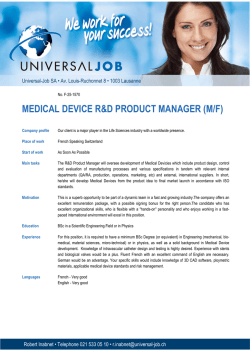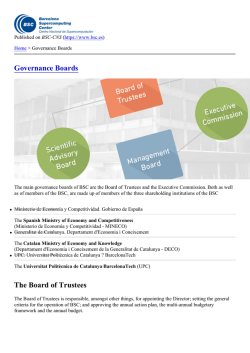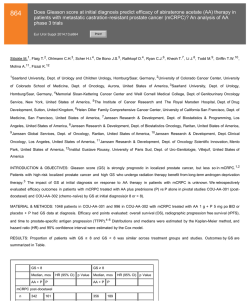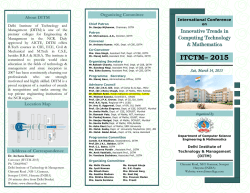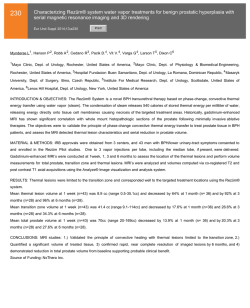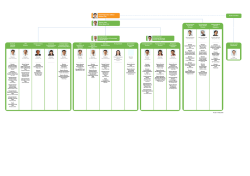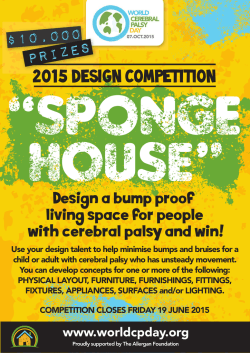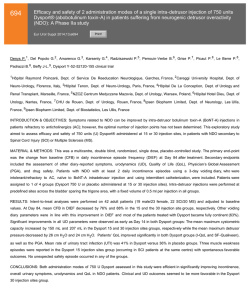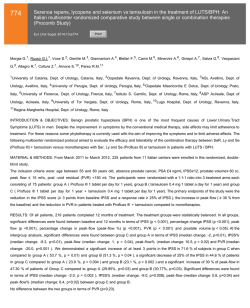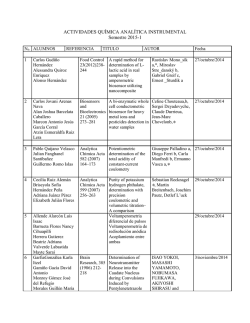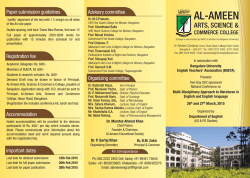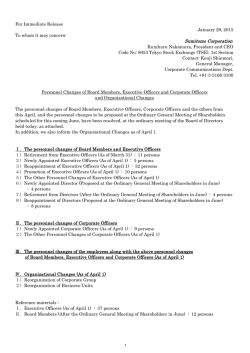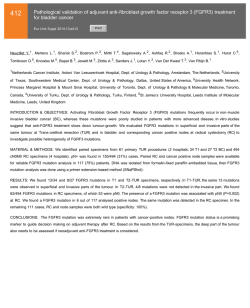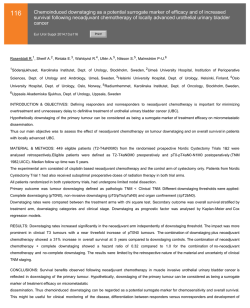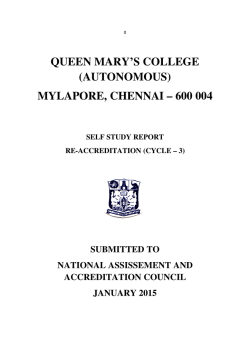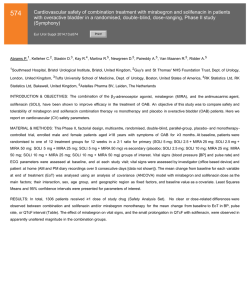
1-s2.0-S1569905614606916-main
701 Cost-utility analysis of onabotulinumtoxinA versus best supportive care in the treatment of idiopathic overactive bladder with urinary incontinence among patients not adequately managed with anticholinergic therapy Eur Urol Suppl 2014;13;e701 Print! Print! Freemantle N.1 , Khalaf K. 2 , Loveman C.3 , Stanisic S. 4 , Gultyaev D.5 , Lister J. 5 , Ng-Mak D.2 , Drake M. 6 1 UCL Medical School, Dept. of Primary Care and Population Health, London, United Kingdom, 2 Allergan, Inc, Dept. of Global Health Outcomes Strategy and Research, Irvine, United States of America, 3 Allergan, Ltd, Dept. of Health Economics, Pricing, Reimbursement and Market Access, Marlow, United Kingdom, 4 Analytica LA-SER International, Dept. of Analytica, Verona, Italy, 5 Analytica LA-SER International, Dept. of Analytica, Lörrach, Germany, 6 Bristol Urological Institute, Dept. of Urological , Bristol, United Kingdom INTRODUCTION & OBJECTIVES: OnabotulinumtoxinA (onabotA; BOTOX ® ) is a newly licensed treatment option for patients inadequately managed on anticholinergic therapy (ACH). The objective of this research was to evaluate the cost-utility of onabotA 100U compared to best supportive care (BSC) in treatment of idiopathic OAB with UI from the UK NHS perspective in this patient population. MATERIAL & METHODS: A Markov model was built with a cycle length of 3 months and health states determined by daily number of UI episodes (UIE). BSC included behavioural therapy, incontinence pads, continued use of ACH in a proportion of patients, and rarely, catheters. Rate of urodynamic assessment was assumed to be equivalent in both arms. Decision rules based on response to therapy (defined as a 50% reduction in UIE from baseline) were put into place to determine eligibility to continue receiving onabotA. Sacral nerve stimulation (SNS) was modelled as a potential downstream therapy in a proportion of BSC patients, non-responders to onabotA, and patients assumed to discontinue onabotA over time. Costs were expressed in monetary units (GBP) and health outcomes in quality adjusted life years (QALYs). Data were utilized from onabotA phase 3 trials and long-term open label extension study up to 1 year. Secondary sources (literature, published guidelines and expert opinion) informed assumptions related to intervention costs, site of care, SNS efficacy and safety parameters, treatment follow-up, and incontinence related costs. EQ-5D utility values were obtained indirectly from the Incontinence Quality of Life Questionnaire through a published mapping algorithm. Costs and effects were discounted at 3.5% annually. Three-, 5-, and 10-year time horizons were used. Univariate and probabilistic sensitivity analyses (SA) were conducted. RESULTS: Over a 10-year time horizon, total costs were £10,160 for onabotA and £11,572 for BSC; total QALYs gained were 6.909 and 6.695, respectively, showing onabotA to be a more effective and less costly (i.e., dominant) treatment option. Univariate SA indicated results were most sensitive to daily UIE and utility source utilized, and probabilistic SA suggested over 80% probability that the incremental cost-effectiveness ratio (ICER) would fall under £20,000. CONCLUSIONS: OnabotA is a cost-effective treatment of OAB and UI among patients inadequately managed with ACH compared to BSC under a majority of scenarios in the UK. This may be attributed to a higher probability of onabotA patients achieving reduction in UIE, associated reduction in health resource utilisation and resulting QALY gain.
© Copyright 2024
